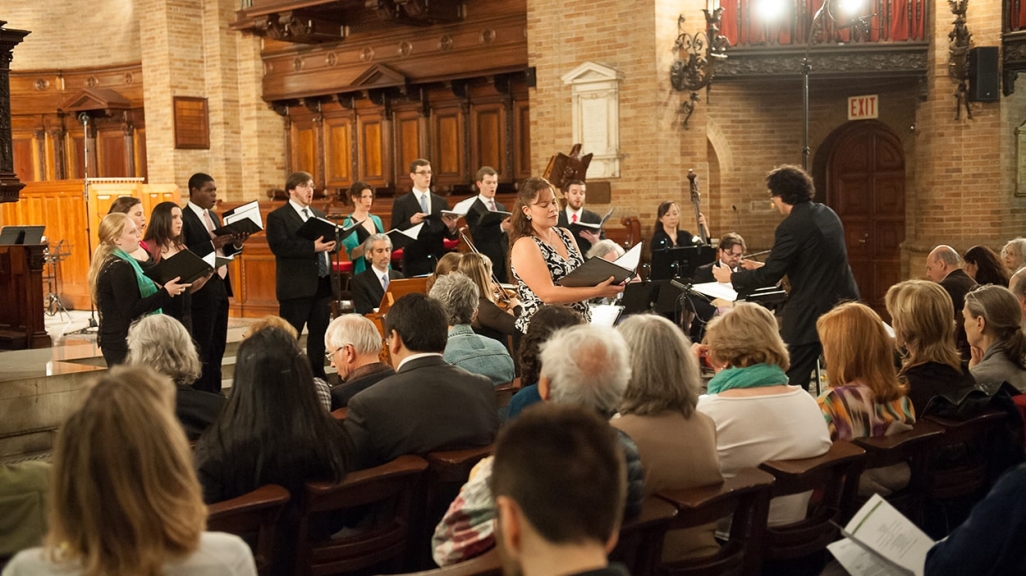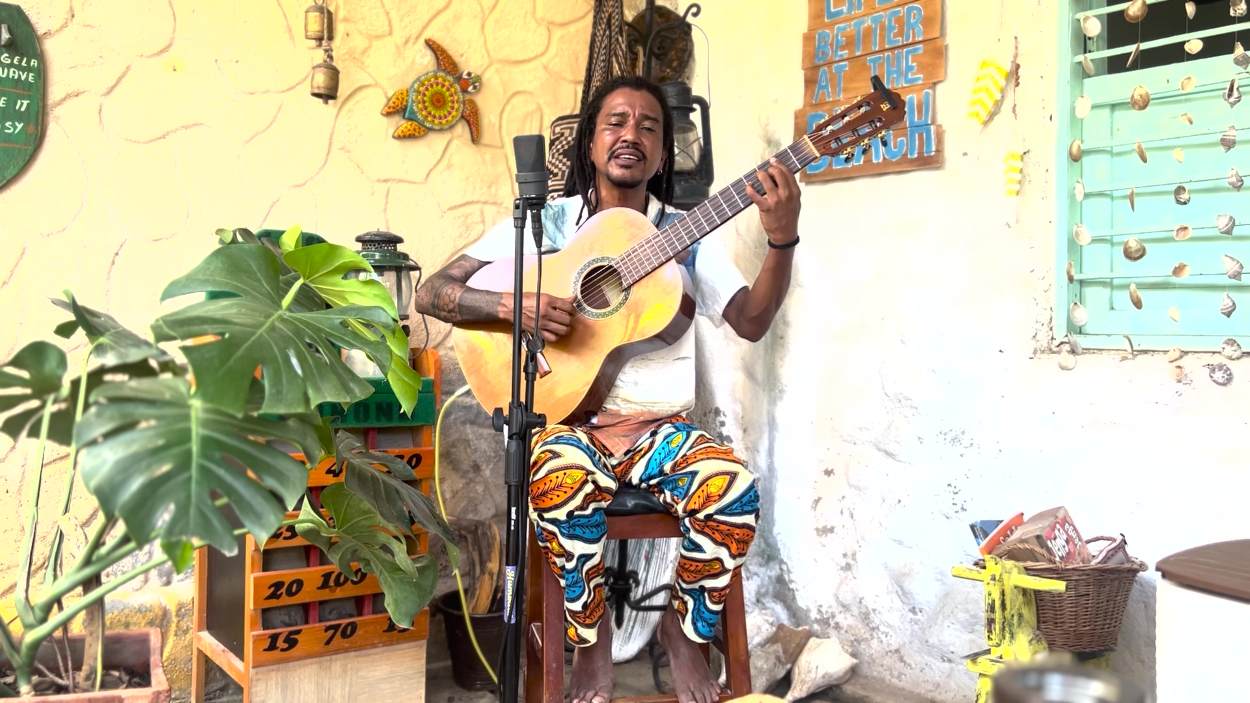Music of the Americas Features Bolivian Baroque
Music of the Americas Features Bolivian Baroque
Clarion Society and Americas Society’s vocal ensemble Meridionalis performed scores from the missions of Bolivia on April 30.
On April 30, Music of the Americas presented a concert of music performed during the eighteenth century in the Jesuit missions of eastern Bolivia, now preserved in the archives of Concepción de Chiquitos and San Ignacio de Moxos. These are among the largest extant collections of music from the colonial period in America and include locally composed anonymous pieces as well as works by Domenico Zipoli, whose music is abundantly represented, and by other contemporary Italian composers. The archives contain hundreds of liturgical pieces in Latin including masses, settings of psalms, magnificats, litanies, and hymns in Spanish and Chiquitano. In addition, there are instrumental compositions: trio sonatas, pieces for keyboard, violins, etc. Musicological work on the repertoire has been especially fruitful over the past 30 years following the virtually fortuitous discovery of the manuscripts.
The Society of Jesus embarked in missionary activity from its inception in 1534. Nowhere was their utopian project more fruitful than in the Province of Paraguay, founded in 1607, which centralized the activity of the Society in the Spanish possessions in southern Latin America. Its territory included present-day Paraguay, the Paraná-Uruguay basin, Argentina, the Chaco plains, and Chile. Politically, the Province was contained in the Viceroyalty of Peru, with its capital in Lima. The area of Chiquitos, in present-day eastern Bolivia, was named after one of the tribes that inhabited the region, where the missionaries established and administered 10 missions from 1691 until their expulsion from Spain and all its colonies in 1767.
The usual process for the foundation of a mission started when the missionaries would convince the chief of a group of natives to convert to Catholicism, abandon their ancestral life, and establish a pueblo. Once moved, they built religious and civil edifices, started agricultural activity, and developed arts and crafts, including music. In the case of the Jesuits’ missionary activity, contemporary references to its power converge around the way in which it made Catholicism more agreeable to the natives and the extraordinary facility and enthusiasm with which the neophytes embraced music-making. At the same time, this musical activity became a very powerful publicity tool for the Jesuits as they sustained political fights with Spanish settlers, local governments, and other Orders. Visits of mission ensembles to urban centers became the showcase for the extraordinary way in which the Jesuit project fulfilled its civilizing mandate. A witness of a trip by a group of Mocobí natives to Buenos Aires in 1758, for example, was awestruck by the vision of scores of these once hostile “tigers” who, “five or six years earlier washed their hands in Spanish blood,” now making music.
Read a New York Times review of this program.
In 1767, the Jesuits were expelled and the Order itself was suppressed for over 40 years starting shortly afterwards. The extrañamiento, as the process was called, was sudden, which meant that many things were left behind, including musical scores and instruments. While former Jesuit pueblos in other regions were largely abandoned soon after the expulsion—and their territories became the setting for political and military conflict—Chiquitos remained relatively isolated and in many cases the populations remained in their former missions. The musical activity that developed during Jesuit times continued until well into the twentieth century; the repertoire grew and the music was still performed in what had become the local tradition. Architectural restoration of the Missions undertaken in the 1980s brought renewed attention to their many cultural riches, including music.
The immediate musical background of these pieces can be found in the Italo-Austrian baroque tradition produced at various courts in Italy and at the Holy Court in Vienna. Most of the priests responsible for the foundation of the musical activity in the Paraguay Province were born and/or educated in the Germanic and Italian Jesuit provinces. Most of the Americas Society program was scored for three-part chorus, solo voices, two violins, and continuo using cello, bass, organ, and guitar.
There was great dramatic and textural variety within pieces, in particular in the extended psalm setting Beatus vir and in the extended Mass movements. Attendees could hear that detailed consideration was given to the interactions between chorus and soloists, who trade commentary and exclamations highlighting the meaning of the text. In the case of the responsorial Iesu dulcissime, this takes the form of subtle shifts in the distribution of the refrain and verses. Next, there are two particularly virtuosic pieces, In hac mensa novi Regis and the instrumental Sonata XVIII. Finally, the voices are frequently accompanied by a melody in octaves on the instruments, adding strong textural variety. This repertoire constituted a uniquely viable musical corpus that has retained its validity for centuries.









